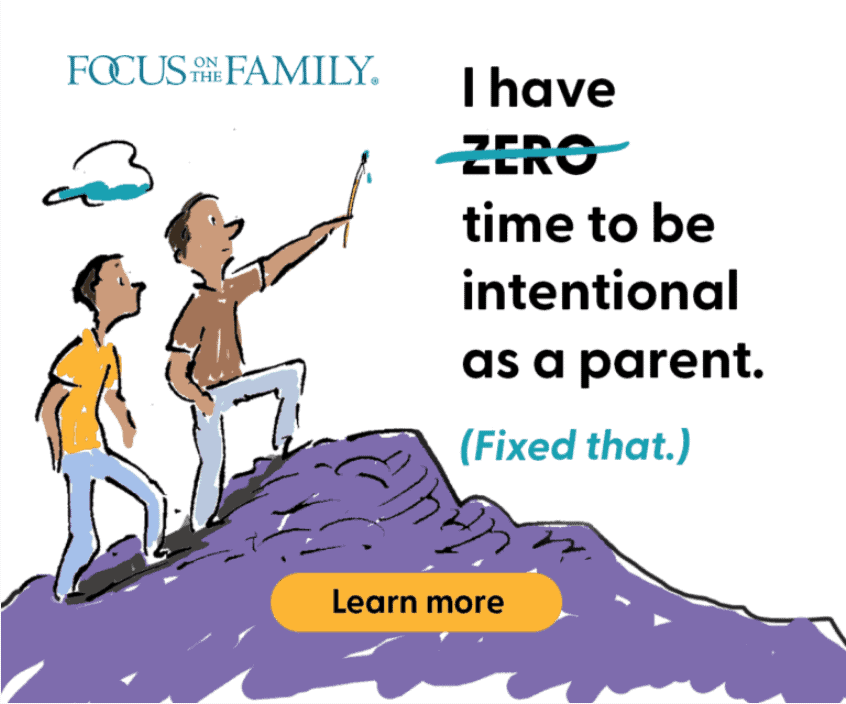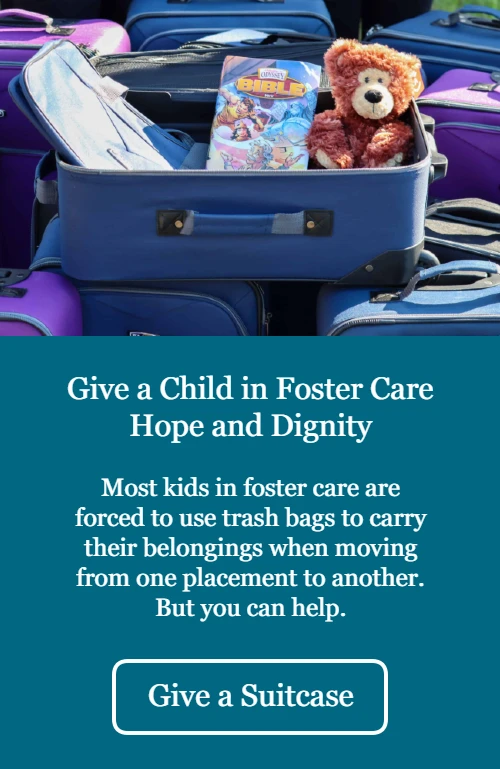A common contemporary understanding of social justice assumes large government solutions. Actually government is far from the most effective agent in producing social welfare. Healthy families best serve this necessary social role. Focus on the Family’s nearly four decades-long work to strengthen families is not just about morality or traditionalism. It includes elevating the personal and social well-being of children, women and men by working to promote a culture of thriving families.
Strong families are among the most effective mechanisms for lifting people out of and keeping them safe from:
- Persistent poverty
- Domestic, sexual and physical violence
- Educational failure
- Crime in their communities
In explaining how powerful healthy families are in preventing these and other serious social problems, America’s dean of social scientists, James Q. Wilson, chides his fellow sociologists regarding the strength of the evidence, saying it “is so powerful that even some sociologists believe it.” James Q. Wilson, The Marriage Problem, (Harper Collins, 2002), p. 7.)
1) Healthy Family as a Defense Against Poverty
- Parental unemployment used to be the primary indicator of childhood poverty, but in the last few decades childhood poverty has a closer correlation with family structure. Isabel Sawhill, from the more liberal-leaning Brookings Institute, explains:
“The proliferation of single-parent households accounts for virtually all of the increase in child poverty since the early 1970s.” Daniel P. Moynihan, “A Dahrendorf Inversion and the Twilight of the Family: The Challenge of the Conference,” in Daniel P. Moynihan, Timothy M. Smeeding and Lee Rainwater, eds., The Future of the Family, (New York, New York: Russell Sage Foundation , 2004), p.xxi.
According to Professor Bill Galston, former domestic policy advisor for President Bill Clinton and senior fellow at the Brookings Institute, never living in poverty in the U.S. requires just three primary things:
1) Finish high school
2) Marry before having children
3) Marry after the age of 20
Only 8 percent of people and their children who do these are poor, while 79 percent of those who fail to do these are impoverished!Dr. Galston, while helping President Clinton in his first presidential campaign, explained:
“It is no exaggeration to say that a stable, two-parent family is an American child’s best protection against poverty.” Elaine Kamarck and William Galston, “Putting Children First: A Progressive Family Policy for the 1990s,” whitepaper from the Progressive Policy Institute (September 27, 1990), p. 12.
- What is more, it is the relationship between the two parents that matters, as demonstrated in the latest data from the U.S. Census Bureau.A child living with two married parents is significantly more than three times less likely to be living in poverty than a child living with either a single, or cohabiting mother or both unmarried biological parents. Rose Krieder, “Living Arrangements of Children: 2004” Current Populations Reports, (U.S. Census Bureau, 2008), table 2, page 6.
- President Barack Obama, speaking at the Selma Voting Rights March Commemoration (March 04, 2007) lamented:
“We have too many children in poverty in this country and everybody should be ashamed, but don’t tell me it doesn’t have a little to do with the fact that we got too many daddies not acting like daddies. Don’t think that fatherhood ends at conception. I know something about that because my father wasn’t around when I was young and I struggled.”
2) Healthy Family as a Defense Against Violence
- According to U.S. Department of Justice figures, women who are married are more than three times less likely to be victims of general violence, (at the hands of their spouse/partner or anyone else) including sexual assault, than women are who single, cohabiting or divorced.“Criminal Victimization in the United States, 2007 Statistical Tables,” National Crime Victimization Survey, U.S. Department of Justice, Bureau of Justice Statistics, February 2010, table 12.
- Married women are more than three times less likely than single, cohabiting or divorced peers to be a victim of either attempted or threatened violence.Ibid., table 11.
- 2009 data from the U.S. Department of Justice explains that domestic violence among intimate partners is dramatically lower between married partners than those living together or dating. In 50 percent of the domestic violence cases, the relationship was boy/girl-friend, while only 33 percent were married. “Profile of Intimate Partner Violence Cases in Large Urban Counties,” Special Report, Bureau of Justice Statistics, U.S. Department of Justice, October 2009, Appendix Table 1. Michael Stiffman, et al., “Household Composition and Risk of Fatal Child Maltreatment,” Pediatrics, 109 (2002), 615-621.
- A study published in Pediatrics indicated that children residing in a home with an unrelated adult (step-parent or live-in boyfriend) were eight times more likely to die of maltreatment than children living with two biological parents. Michael Stiffman, et al., “Household Composition and Risk of Fatal Child Maltreatment,” Pediatrics, 109 (2002), 615-621.
- Research published in the journal Child Abuse and Neglect found that a stepfather is seven times more likely to molest a girl than her biological father. When biological fathers did molest their young daughters, it was a single father, with a mother not residing in the home. What is more, the nature of sexual abuse by stepfathers was more severe than sexual abuse by biological fathers. Michael Gordon, “The Family Environment of Sexual Abuse: A Comparison of Natal and Stepfather Abuse,” Child Abuse and Neglect, 13 (1985): 121-130.
3) Healthy Family as a Defense Against Educational Failure of Children
- The famous 1966 Coleman Report on education, Equality of Educational Opportunity, concluded the leading contributor to academic achievement by school children was family structure. Data gathered since that time has only strengthened that conclusion.
- Numerous studies show children living apart from their married mother and father are 50-80 percent more likely to do poorly in grade-average, problem-solving skills, early drop-out, have behavioral problems with teachers and other students, fail to graduate or attend college and graduate with any type of degree. These kids are also more likely to not be working when they do drop out.
4) Healthy Family as a Defense Against Crime in a Community
- Community crime research from Stanford University finds that “such family measures as the percentages of the population divorced, the percentages of households headed by women, and the percentage of (single males of any age) in the community are among the most powerful predictors of crime rates.” Michael Gottfredson and Travis Hirschi, A General Theory of Crime (Stanford: Stanford University Press, 1990), p. 103.
- The Democratic Progressive Policy Institute reported in the early 1990s that the relationship between crime and fatherless families is “so strong that controlling for family configuration erases the relationship between race and crime and between low-income and crime. This conclusion shows up time and again in the literature.”Elaine Kamarck and William Galston, “Putting Children First: A Progressive Family Policy for the 1990s,” whitepaper from the Progressive Policy Institute (September 27, 1990), pp. 14-15 That is a powerful finding.
- Controlling for factors like neighborhood quality, race, mother’s education, and cognitive ability of the individual, boys raised in single-parent homes are about twice as likely — while those raised in step-families are two and a half times more likely — to have committed a crime that results in incarceration by the time they reach their early 30s compared with boys raised with both parents. Cynthia Harper and Sara McLanahan, “Father Absence and Youth Incarceration,” Journal of Research on Adolescence 14 (2004) 369-397.
- The years spent living with a biological father substantially reduce the prevalence of illicit drug-use, police contact and out-of-wedlock childbearing for young men or women. Wendy Sigle-Rushton and Sara McLanahan, “Father Absence and Child Well-Being: A Critical Review,” in Daniel P. Moynihan, Timothy M. Smeeding and Lee Rainwater, eds., The Future of the Family, (New York, New York: Russell Sage Foundation, 2004), p. 123.
Conclusion
Justice and care for others are not liberal or conservative values. They are fundamental Christian qualities, as we are clearly commanded to seek justice and work for the betterment and care of our neighbors.
The LORD loves righteousness and justice; the earth is full of his unfailing love. (Psalm 33:5)
He has told you, O man, what is good;
And what does the LORD require of you
But to do justice, to love kindness,
And to walk humbly with your God? (Micah 6:8)
And Jesus explains in Mark 12:29-31 …
“The most important [command],” answered Jesus, “is this … ‘Love the Lord your God with all your heart and with all your soul and with all your mind and with all your strength.’
The second is this: ‘Love your neighbor as yourself.’ There is no commandment greater than these.”
Family is the first institution God gave humanity. No surprise then that it is the best mechanism for improving human thriving and the establishment of justice.





















